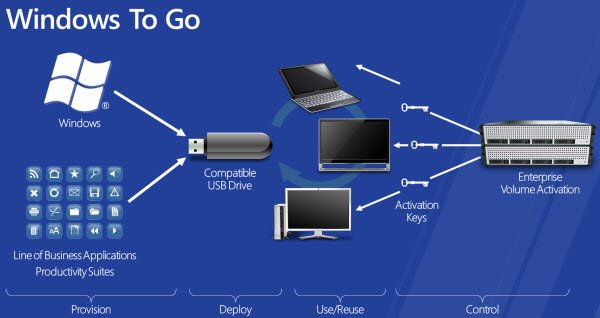Windows To Go feature explained
Windows To Go makes it possible for employees to use a managed device such as a USB drive, hard disk, flash drive even SD cards to work from home, a client office or in a library. The working of this feature is as simple as plugging and ejecting a USB drive. You plug the USB drive with Windows, select it during boot, and in a few seconds, Windows Start appears. Windows To Go allows a person to copy their entire Windows 11/10 installation onto a USB drive with all of the personal files intact and the user can resume working on their own files and applications. Documents in Windows 11/10 are automatically synced to your OneDrive. So you always carry your files with you and have a backup ready in the cloud. Other information:
Windows will default boot to a Windows To Go drive if one is presentSeveral drivers will be bundled and in case some aren’t there, Windows Update will download themIt will support both USB 2.0 and 3.0There is no Hibernate possible for a Windows To Go instanceWindows To Go will work on legacy BIOS and UEFI firmwareCrash and Dump will be available for Windows To Go instances.
The feature looks promising and it was among the ones that caught my attention. A 32 GB USB Stick is recommended for Windows To Go feature. Read next: How to create a Windows to Go version of Windows 11.

